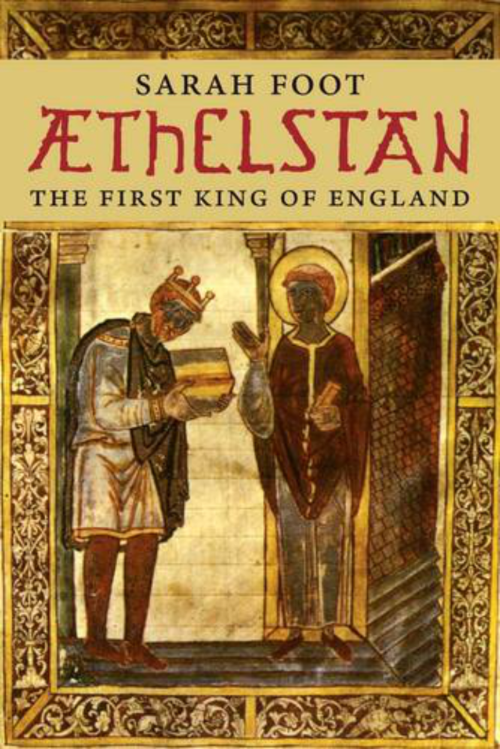
Athelstan The first king of England
Sarah Foot

Punished 2011
by Yale University Press
ISBN 978-0-300-1871-7
283 pages, soft cover
15.5cm by 23.5cm
Reviewed for Volume 3 Issue 3 Summer 2025
The Review
If you are seriously researching Aethelstan then this is the book. That’s it.
OK, some more information. Athelstan took Mercia and Wessex and merged them again, to be King of the Saxons. He went on to become king of everything south of Scotland to be the first King of the English (and Welsh). Actually he went in to some of Scotland too making him arguably the first King of Britain. However he also did so much more and this book covers the “so much more”.
The late Frankie Howard would like this book it has a prologue, and an epilogue. This is what makes this book so useful: it is not just the story of Athelstan but sets him in context of what was there before and what came after. It sets Athelstan in to a picture of Saxon Britain. Hence an essential book for all Saxon scholars.
I say scholars, make no mistake this is not a story book, or a lightweight skim though history. This is a solid very well researched academic book. There are 19 plates, 2 family trees and 4 maps along with footnotes on almost every page and 10 pages of primary and secondary sources. It is all there. Not for the faint hearted but if you want to know about Athelstan it is all in there. Well, in the book, and the many primary sources it points to.
If you want something light and readable, but is historically accurate, the fictional King Alfred’s Daughter by David Stokes, in which Athelstan appears as a side character, is a great read. However, as soon as you want to dig deeper, this book on Athelstan the King has all the answers. Well the ones that can be answered. In some cases there is more than one theory and the author lays them all out, giving her reasons why one is favoured over others but you are free to make your own mind up with all the evidence presented.
One interesting section is the prologue. It is actually chapter 1 that sets the scene of Saxon Britain, whereas the prologue talks about how you approach writing about Saxon England. This helps immensely in understanding how the history comes about when you have to connect historians writing 150 years after events and documents from the time they are referencing. There is also a list of things mentioning Athelstan that cannot be accurately dated. Indeed most of them had a 10 years range. Indeed there are comments on what is not actually known but might be inferred and there is brutal honesty about how little can be positively confirmed. The man did so much, at least, so much was achieved in his reign which was 1/3 of his life with 2/3 virtually unknown except by the marks left behind that others comment on. I don’t want to dam with faint praise but this book is the best you will get, or rather, it has uncovered all there is to uncover, at the current time*, and has been looked at in a rational and level way. You won’t find anything better. Though you might find lighter works that skim and are more digestible if that is all you need.
*This and other recent books on the Saxon era have noted that a vast amount more has been learnt about the period due to advances in science and technology over the last 25 or so years. Things like DNA testing, ground penetrating radar, LIDAR etc. Not only becoming available but comparatively inexpensive and available to all.
